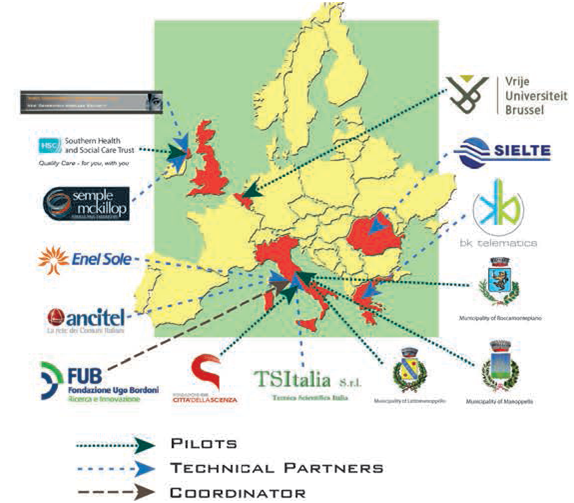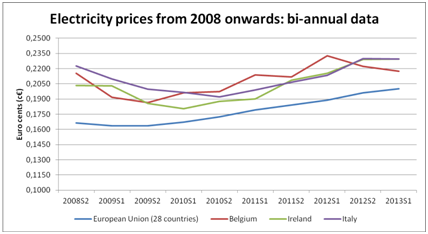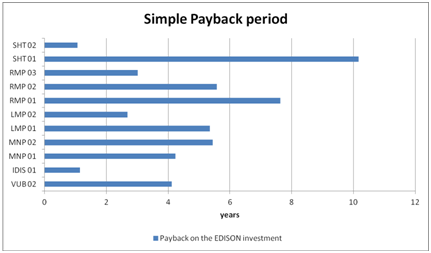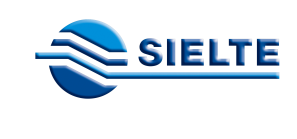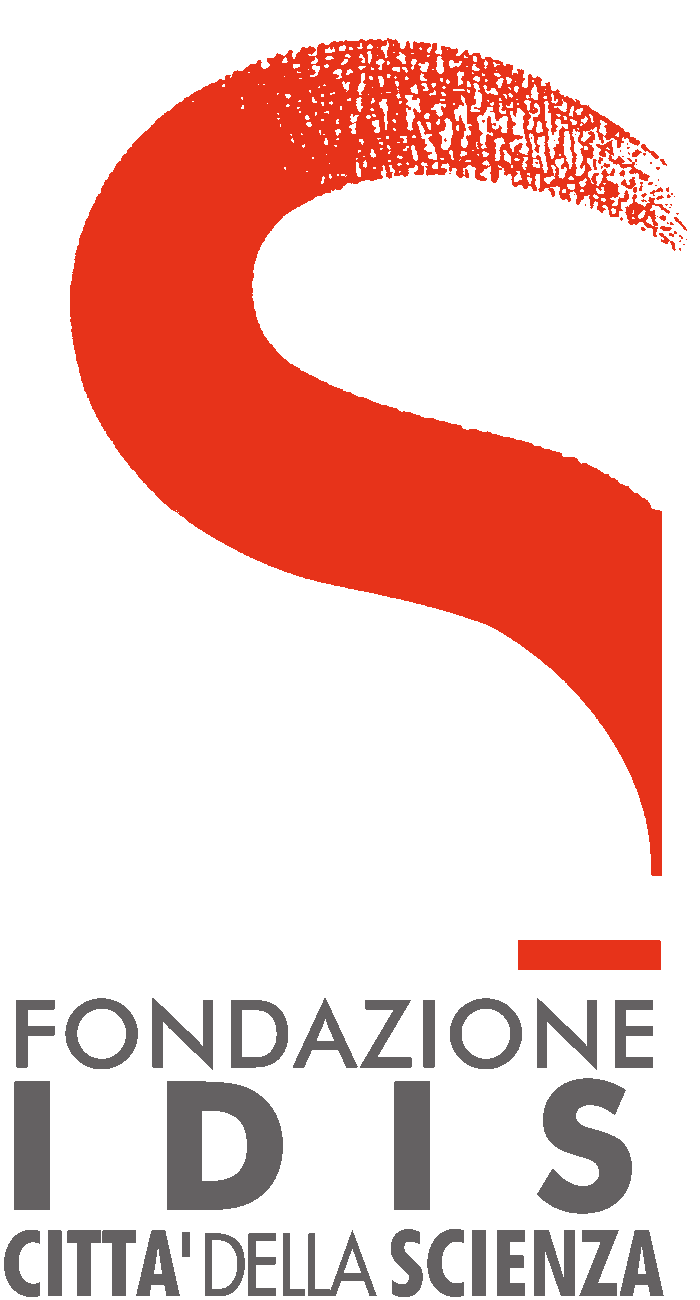EDISON¶
Energy Distribution Infrastructure for Ssl Operative Networks
– Project web-site – Contact – 
Pilot Sites – Approach – Impact – Costs-Benefits for EDISON Pilots – EDISON Solution Costs – Exploitation – Conclusions and Recommendations – Partners
The project proposes an innovative ICT-based lighting infrastructure that along with power electronics, customized software tools, wired and wireless capabilities, constitutes an integrated network able to logically coordinate and organize all the data originated in ICT components and systems (e.g. smart metering, sensors, renewable energy sources, etc.), with the opportunity of delivering them where and when they are requested, in order to get both valuable energy savings and workspace productivity enhancements.
One of the key aspect of the EDISON solution is represented by its capability to be implemented both in energy retrofitting actions, replacing the existing lighting power supply infrastructure with “a 48 VDC Extra Low Voltage Lighting Power Distribution Network”, and in new buildings construction, making the corresponding lighting infrastructure “native EDISON” compliant. The resulting innovative lighting infrastructure is based on the use of Solid State Lamps (SSLs), e.g. LEDs, fed by a centralized DC power supply, in order to realize a Smart Energy Platform (SEP).
The SEP accommodates all EDISON components, both hardware and software, and delivers a smart lighting system, powered and controlled through the electrical wires available from the existing infrastructure. It is able to exchange data with the field and to interact with lighting dimming modules, sensors and actuators, giving evidence of the energy saving results, efficiency, real time operations, etc. The distributed high-density sensors network included in the SEP, in fact, eliminates the need for time-consuming occupancy/lighting sensor calculations for daylight harvesting, providing more than an advanced lighting management.
The use of light control modules and lighting fixtures, as proposed in the EDISON approach, allows to implement a hybrid distribution layer, where the low-voltage power does not replace AC in a building, but complements it. The goal is to efficiently aggregate or eliminate multiple AC to DC conversions, thereby making devices simpler, safer and more flexible in use. The architecture and the hardware components used in the solution are not limited to a single service, and could be devoted to services different from lighting, representing in this way an open control platform for building automation and monitoring.
In synthesis, the adoption of EDISON approach allows to take advantage of multiple benefits, like: • make quick and safer installation of lighting fixtures and other low voltage devices; • facilitate the direct connection and efficient use of energy from solar, wind, or other native DC alternative energy sources • reduce energy consumption (under real operational conditions) through the usage of LED lamps, sensors and control devices, for about 60% and more than 15% of the current values respectively • contribute to a more environmentally-sustainable energy policy, reducing CO2 gas emission and leading to a global level in the fight against climate change.
Pilot Sites¶
Pilots of EDISON platform are located at 12 sites in 3 countries in different climate zones of Europe. For all pilot sites, images are available.
Approach¶
The project lasted three years and has broken down in 6 work packages according to type of activities: 1 management and coordination-oriented (WP1), 2 technical-oriented (WP2, WP3), 1 demonstration-oriented (WP4), 1 evaluation oriented (WP5), and 1 for dissemination exploitation oriented (WP6). Each work package corresponds to only one activity.
Activity types are distributed in the following way: * WP1 corresponds to management activity (administrative management, coordination and reporting at project level), occurring through the project*s life * WP2 and WP3 will deal with the identification of a reference model for EDISON Implementation Platform for any kind of building typology, designing the different system components, both hardware and software, that will be integrated in any Pilot to constitute the complete EDISON system * WP4 will propose the integration of all components into a wider platform to support the validation of the overall integrated system * WP5 will be in charge of the analysis of data resulting from the Pilots in order to obtain the necessary information to evaluate and validate the Edison efficiency actions * WP6 will be dedicated to dissemination, standardisation and training activities.
In particular, the WP5 focus on the validation and on the quantification of the EDISON consumption energy saving capability, of the lighting retrofit. The quantification of the energy consumption is based on the comparison between the real life Pilot consumption, recorded on one year, with the corresponding one year-baseline data. The analysis is performed in according to the IPMVP-Option A methodology. In one case (VUB restaurant pilot) the energy saving is evaluated comparing concurrent consumptions from two similar Pilot areas, contemporary monitored, on which in one it is operative the EDISON solution. In order to completely achieve the objectives of the projects, in terms of users acceptance, recovery of investments, validation of the economical analysis, and socio-economic impacts a detailed analysis has been carried out in WP5. Moreover, opportune and validation actions through each EDISON pilot are carrying out to highlight user-acceptance, and real investment-return. These results can be the seen as reliable case-studies.
Impact¶
The data resulting from Pilot lighting consumptions are analyzed in order to obtain the necessary information to evaluate and validate the Edison efficiency actions. In particular, focusing on saving contribute due to ICT components and on the CO2 amount avoided gas emissions, according to the IPMVP-Option A methodology. The evaluation and the assessment of the adopted ICT solution impact constitute the heart of CALL.
To answer to the above objectives, a set of efficiency indicators has been provided. These are divided into two main groups: * Energy efficiency Indicators: (time, space and number of users based analysis) * Environmental Indicators: (CO2 emissions and avoided CO2 emissions)
Shortly, on the basis of the previous considerations, overall Pilots on monthly base, the average ICT Gain ranges from about 16 % to 42 % of kWh with respect to baseline consumptions. The corresponding avoided ratio of CO2 emissions ranges from about 560 to 25000 kgCO2 per year. These values are strictly related to the technical lighting infrastructure and to the building typology/Pilot features.
Moreover, thanks to statistical information collected from users in each Pilot, before and after the EDISON platform installation, it was possible to assess of the social, economic, psychological and behavioural changes introduced by EDISON platform. The questionnaires analysis showed that: users are largely in favour of the proposed solution EDISON as well as users are aware of the benefits and potential services.
These positive feedbacks from end users encourage the dissemination of the EDISON platform in other buildings, to benefit a strong reduction of lighting energy consumptions and economic saving, as well as to avoid CO2 emission.
An additional activity carried out concerns the interoperability of the solution worldwide, considering the technical aspects specific to EDISON and their compatibility with national/international rules and regulatory plans.
Yearly CO2 reduction equals...
...the weight of around 5 african elephants for each pilot buildings.
Costs-Benefits for EDISON Pilots¶
Lighting represents approximately one-third of electricity use in commercial, public buildings and more than one-half in lodging and retail. As a result, there is relevant interest in reducing lighting energy use through more efficient lighting systems, including controls. While energy savings from some system components, such as replacing neon tubes with LED tubes, can be fairly easily quantified and guaranteed, savings from controls, that turn lights off or down when not needed, depend on numerous factors including application, site orientation and occupation, building design, interior reflectance, occupant behaviour, and so on, making savings less easy to predict. The applicability of control strategies is not uniform throughout a building, and is essentially carried out through:
- dimmer switches: devices used to manually vary the intensity of the light output, by decreasing or increasing the mean power to the lamp;
- time switches: devices to turn on and off the light at specified time. They can be used in outdoor areas, parking, corridors, stairs and indoor public areas (hall, lobby etc.);
- motion detectors: devices to turn on lights when they detect any presence, avoiding waste of energy when no one occupies the place. They can be used in low?trafficked outdoor areas, parking, corridors, stairs and public WC;
- light level sensors: devices to turn on artificial lighting when detect that the ambient light falls below a predetermined level. They can be used in outdoor areas, corridors, stairs and indoor public areas (hall, lobby etc.).
The ICT components and adopting a DC Centralized system (DCC) can be able to save more than 15% of the lighting consumption, in addition to saving ratio due to the use of LED technology. At these significant energy gain advantages, the EDISON platform allows the use of the existing lighting infrastructure as cabled data link, without significant reconstruction works or investments in new infrastructures, make the solution attractive and profitable.
EDISON Solution Costs¶
The EDISON experience has shown that occupancy controls have the greatest potential in spaces where occupancy varies throughout the day, and day-lighting controls should only be applied in portions of the floor area where sufficient daylight exists. More in general, since many factors significantly affect the energy saving potentials of the different control strategies, the assessment of the investment profitability always needs to go hand in hand with quality aspects of the installations, number and complexity of ICT components, including smart metering and power supply modules, quality of the LED lamps used in the Pilots, etc. The resulting business model for the EDISON solution should take into account all these elements, including a risk and cost analysis in terms of CAPEX/OPEX assessment.
Cost Analysis in terms of CAPEX/OPEX Assessment As above mentioned, an effective benchmarking of the EDISON platform require the modelling of relevant aspects influencing the expenditures linked to electrical infrastructures, based on assumptions on investment cost (CAPEX) and operation cost (OPEX) that may be validated from operational data. The first ones, essentially, refer to all the expenses linked to the implementation of the hardware and software components that are necessary for converting the existing lighting infrastructure in a EDISON-compliant one. On the other hand, the second ones refer to all the expenses related to the operational and maintenance activities that need to be considered for ensuring that the platform always works efficiently. More in detail, the following cost items need to be taken into account:
Capital Costs¶
This item includes the cost for the provisioning of LED lamps, which are more expensive than the traditional neon tubes. In addition, it should be considered the contribution due to the adaptation of the existing fixture power supply (220 VAC) to the LED tube one (48VDC), mainly consisting in the removal of the ballast and in a re-arranging of the wires. There are, in addition, extra costs due to the adoption of a PowerLAN prototype, which includes dimming basic modules, electronics, installation, a simple CPC module, software tools and, eventually, the integration with a PV system.
Energy Costs¶
This item is linked to the savings, in terms of kWh, due to the power supply reduction required for feeding LED tubes fixture, whose computation takes into account the amount of hours in a day in which the lighting infrastructure is operative.
Maintenance Costs¶
This cost item is referred to the operation and maintenance ones, which are reduced for LEDs in comparison to other technologies, thanks to the longer lifetime of the LEDs. Consequently, the need to substitute the burnt-out or damaged lamps is much less frequent. The fluorescent neon tubes in the traditional 4 tube-fixtures require replacement each 24 months due to the continuous use and the expected lifetime (about 7-8000 hours). The lamps are typically replaced upon failure and the yearly replacement cost includes both labor and equipments items. On the contrary, LED fixtures offer a lamp life of about 50,000 hours of use before considering replacement. This extended lifetime means an operative period of more than 13 years, assuming a continuous use of 14 hour-a-day. Furthermore, after 50,000 hours, the lights are not out, but they simply have reduced light output (about 60% of the original output), with the consequence that, in some cases, the LED modules in the fixtures are not replaced before a period of 15 years. In particular, the power supply solution adopted in EDISON, with modules external to the lamps, increases the reliability of the LED lamps. It should be taken into account that these cost items could be optimized considering the annual cost variation of electricity (see Figure below, Source Eurostat) for a reference related to the countries involved in the project), as well as the tendency to lower prices for ICT components and LED lamps (the cost trend is decreasing and the forecast is a reduction of 20% by 2020.
Even the maintenance cost could have no impact on the OPEX, because in a short period, such as the forecast average payback one the EDISON platform requires, it constitutes a negligible cost thanks to the high MTBF of the components.
In order to quantify the investment requested to implement the EDISON platform, considering all the aspects above mentioned, a payback plan has been calculated for all the implemented Pilots, taking into account the volume of EDISON components cost designed for each pilot. Figure below shows the payback period for each EDISON implemented pilot that is around 3 to 4 years.
Exploitation¶
The main purpose of the exploitation and dissemination acts of the Project was to achieve and raise awareness a wider audience of market operators, building managers and local and national Administrators. In order to ensure a successful and sustainable exploitation of EDISON results, the exploitation plan involved 3 strategic levels: * local / regional * national * European
The main dissemination tools that were produced/organized by the end of the Project: * brochures of the Project * booklet to implement the EDISON solution * interviews of the TM Project at local/regional TV channel and newspapers * article on the availability of the EDISON solution on national newspaper * participation at scientific international conferences
Furthermore, several Business Case have been evaluated. In particular, on the basis of the experience that has been accumulated during the Project, three business cases referred to three building typologies have been selected and quantified assuming a realistic lighting infrastructure: * Primary school building * Museo/Expo building * Medium-size office building
For each of these case, the trend of the cumulative cost saving from the use of EDISON solution (including the use of high efficiency LED lamps and ICT components) as well as the economic return have been calculated.
Conclusions and Recommendations¶
The EDISON idea was born from the need of refurbishment to transform existing buildings into energy-efficient buildings. The annual growth rate of new buildings added to the housing stock, in Europe, is currently at less than 1% of the housing stock (about 170 million residential and commercial buildings), due to the European crisis.
The number of refurbishments accounts for roughly 3% of the housing stock per year. This means that most of the energy efficiency actions should be devoted to existing buildings. EDISON has integrated lighting infrastructure, innovative ICT technologies, peculiar tools and commercial components in a Smart Energy Platform (SEP) to reduce energy use in lighting systems, with no impact of the retrofit action. In public buildings most of the energy used is required for heating, cooling and lighting.
Operating on the lighting system and using the existing electrical infrastructure it is possible, thanks to EDISON solution, to manage different aspects of energy consumption, from HVAC to illumination. In addition, some complementary services will be offered to the people attending the premises, that will make their stay more comfortable: guided tour in museums (the colour of additional lamps could be controlled to guide the visitors in a specific way), special event advertisements on intelligent screens updated via lighting infrastructure, information about indoor air quality, etc.. This extension of the SEP application requests small extra components to the basic platform and can profit from the existing electrical infrastructure.
Results from the Pilots confirm the high performance of the EDISON solution for its peculiar idea of joining the DC power supply to the ICT benefits. In fact, the foreseen saving of around 8% due to the specific power supply makes the relevant difference in the final results. The energy saving peak observed among all the Pilots reached figures around 83% including an average ICT contribution of 30%. It appears evident as the ICT components contribute largely to the saving action. Obviously the results depend on the period of the year and on the variation of presences in the pilot site.
As a general conclusion, in the following, it is reported a very interesting picture illustrating the evolution of electrical power sources over the last century. It emphasizes the fact that it is expected, in the next few years, we will return using the same power approach adopted by the discoverers of the electric power, as claimed by the EDISON project as well in its very known slogan Bringing the past into the future.
Partners¶
Coordination¶
Fondazione Ugo Bordoni is a no-profit private organisation subject to the supervision of the Italian Ministry of Economic Development (http://www.fub.it/en/home). FUB performs and supports scientific and applied research in the fields of communications, computer science, electronics and multimedia, in order to promote scientific progress and technological innovation. In particular, FUB aims at identifying innovative solutions for broadband communications and new generation networks to meet the challenges posed by technological convergence. After having developed a solid expertise in the field of communication networks, FUB has extended the range of its activities to ICT. The ability of FUB to combine ICT (Information and Communication Technology) research with public interest services contributes to the protection of citizens.
Sielte Romania SA is company specialized in telecommunications networks and has been working on this field for long time on behalf of major clients such as Romtelecom, the leading fixed-line telephone operator and for the most important operators of electric utility (ENEL), water and Industry rail. Sielte Romania is certified ISO 9001:2008, ISO 14001:2004, OHSAS 18001:2007 and AFERA Authorization (Railway), (http://www.sielte.com/index.php/en/contacts/sedi/49-romania). In addition to the head office of Bucharest, Sielte SA has also operational offices in the regions of Brasov and Dolj Galati. Depending on the complexity of projects to be implemented, Sielte SA, completely independently or in collaboration with the parent Sielte SpA Italy, is able to offer the complete execution of projects “turn key” starting from the study, design and implementation, up to the commissioning and maintenance of: • traditional networks in cable, fiber optic and P.R. • systems and broadband networks • Intelligent Networks • mobile networks • rail TLC networks • fixed and mobile transport and access networks • conventional energy systems, photovoltaic and wind based • safety and control systems • LAN-Wan networks, • traffic monitoring systems
TSItalia Srl is a company managed by professionals with a common experience in the energy, telecommunications and information technologies. Despite its relatively short history, TSItalia S.r.l. has already many gained a large experiences in designing and engineering of telecommunication networks, based on systems using cutting edge radio and cable technologies. TSItalia S.r.l. is a WISP operator and realized wireless access networks, targeting people living in Abruzzo and Lazio regions. Particular attention was paid to radio access technologies such as Wi-Fi, Hiperlan II, WiMAX and establishment of networks of backhauling with the most modern wireless technologies (microwave and FSO). The skills developed by TSItalia Srl are focused mainly on monitoring & control systems. TSItalia S.r.l. acquired knowledge and developed projects in the energy efficiency field, with particular reference to lighting (SSL) and power systems based on renewable energies such as solar, geothermal and heolic.
BK Telematics Ltd is a company which design, analyzes, and finally develop Telematic products software and hardware. They have expertise in the area of Fleet Management Systems and in the area of Green Energy Solutions (Monitoring Photovoltaic Systems and Cost and Quality Control Systems). As an example BKT is integrators of BK3000TG GPS-GPRS mobile unit and has already finished with the interconnection of CAN-BUS (FMS) of heavy cars (and small cars). Also we have develop and installed a Bus System with Smart Stations that informs every citizen in a Municipality in Athens. The power to allow the smart stations to work, is supplied by solar energy and for this reason they are “total green Smart Station”. Source code for software (called PanOpticum) was already tested by “Veritas” in order to become certified partners with Microsoft (from 2008). Furthermore BK Telematics is specialized in developing open source tools (as MapX, MySQL etc). We have more than 100 customers in Greece and now we are trying to expand in other Balkan countries (Cyprus, Romania and Turkey).
Vrij Universiteit of Brussel is the offshoot of the French-speaking Université Libre de Bruxelles that was founded in 1834 by a Brussels lawyer with Flemish origins, Pierre-Théodore Verhaegen. The spirit of the founder was to establish a university that would be independent from the state and the church and where academic freedom would reign. The Vrije Universiteit Brussel (VUB) is a medium-sized university, delivering research driven education, at an international level, with the primary objective of providing students with an academic education in the domains of human sciences, life sciences, and science and technology. Internationalization is one of the top priorities in the strategic plan of VUB. VUB takes the lead in recruiting high-level international students and professors by offering an attractive international and English taught education portfolio. Exchange of case studies, cultures, ideas and values is an enriching experience for all students. Researchers are integrated in internationally renowned research teams. All educational and research programmes have one common objective: sustainable innovation. Apart from their specific technical experience, they provided also two pilot sites: the university restaurant and the Dean’s office and student welcome centre.
Fondazione IDIS – Città della Scienza operates since 1987 and plays a leading role in the dissemination of scientific knowledge and technological innovation. Its science centre, inaugurated in 2001, is well-known for the quality and innovation of its activities. It received international awards: 2005 Micheletti Prize for the best scientific museum of the EMYA and the 2006 Descartes Prize for Science Communication. The BIC of Città della Scienza offers advanced services to companies specialized in sectors considered strategic for the regional territory: ICT, Environment, Aeronautics and Aerospace. The BIC also manages a specific Technology Incubator. IDIS leads and participates in FP7 projects. It coordinates Tome for Nano in partnership with 12 organisations to engage young people with nanotechnology with the support of artists. Other FP7 projects include ACCENT, TWIST, NanoToTouch, GAPP. Apart from their specific technical experience, they provided also one pilot site: the Marie Curie Hall, a museum building.
Ancitel is a Joint stock Company established in 1987. Ancitel is a subsidiary of ANCI (National Association of Italian Municipalities) and supports local Governments in the management of technological and organisational innovation processes. To fulfil its mission, Ancitel has three operational objectives: • provide the Municipalities with assistance in the adoption of administrative procedures, essential for a correct implementation of regulatory standards; • ensure support in the application of new technologies, for the development of e-government • policies; • create thematic network in order to be closer to municipalities’ concerns through promotion of • information exchange and coordination of territorial operations; • propose to the Central Institutions initiatives and projects in support of local government • innovation processes. • develop pilot initiatives at national and international level for the strengthening of local • government capacities of planning and delivering innovative services to citizens and • enterprises.
Ancitel works strictly with Central Institution for the implementation of initiatives and project whose Municipalities and other Local Governments are beneficiaries. The activities concerns organisational consultancy and implementation of technological solutions in order to deal with criticalities and problems in delivering local public services.
Enel Sole is a subsisdiary of Enel S.p.A. the Italy’s largest power company, and Europe’s second listed utility by installed capacity. Enel is divided into seven Corporate Divisions: Gem, Market, Engineering and Innovation, Renewables, International, Iberia and Latin America and Networks and Infrastructures. Enel Sole S.r.l. is the Enel subsidiary belonging to Networks and Infrastructures Division with focus in developing and managing Public and Private lighting systems. Enel Sole S.r.l. provides service for 4,000 municipalities with 2,000,000 lighting points managed with a share of market in 22%; more than 80% of revenues comes from long term relationship. Enel Sole S.r.l. business is based upon four lines of activities: • Full-line service provider in public lighting (global sourcing) • Construction and renovation of urban lighting installations. • Energy auditing, indoor lighting for private client • Realization of artistic lighting
Global service of public lighting represents approximately 2/3 of the total revenues and it’s mainly constituted by ordinary maintenance (replacement of lamps, painting supports,…), and extraordinary activities of breakdowns management. Contracts with clients might include electric energy supplied by Enel Sole S.r.l. or be without electric energy supply. In both cases Enel Sole S.r.l. earns an annual fee for lighting point, for an average of 10-15 years. Construction and renovation corresponds to 1/3 of Enel Sole S.r.l. revenues and it’s about making new public lighting and the restyling of old ones. Enel Sole S.r.l. is an Energy Service Company (ESCO) that promotes measures for energy efficiency in indoor/outdoor lighting, production of energy from renewable sources, ESCO advice for end-use energy efficiency improvement and upgrading the energy efficiency of buildings. Finally ‘artistic lighting’ represents a small percentage of the total but it is strategic lever for the company for image and institutional relevance. Providing 2.000.000 light points allowed to Enel Sole S.r.l. to have a remarkable expertise on Clients needs in terms of: energy saving, total cost reduction and high customer satisfaction.
Semple & McKillop Ltd is an Irish based Consultant Engineering practice with extensive experience in the Health sector and also in the evaluation and implementation of Energy efficiency programmes. The company has been working with the Southern Trust over the last few years to assist with the development and maintenance of their Estate and have gained valuable insights into where potential opportunities exist for energy efficiencies. They employ approximately 20 professionally qualified engineers most of whom are Charted members of their professional institution. Apart from their specific technical experience, they provided also one pilot site: the Healthcare offices at Bocombra Lodge.
Traffic Observation & Management Ltd is a recent start-up company from the Queen’s University of Belfast that focuses on embedded wireless networks and network security systems, especially wireless intrusion detection/prevention systems (WIDS/WIPS), which protect both wireless networks and wired networks from attackers. It provides wireless security solutions for complete protection against wireless threats, policy compliance monitoring/enforcement, network performance monitoring, wireless security auto-configuration, and troubleshooting. TOM LTD has specific expertise in securing embedded communications systems.
Lettomanoppello (I)¶
Lettomanoppello municipality is a town in the province of Pescara, Italy. Lettonoppello has an area of 15.00 square kilometers and is located in a hill, 370 meters above sea level, on the edge of the Maiella National Park. The area in which the site is located Pilot is slightly outside of the town and surrounded by vegetation . The population is about 3000, and a density of about 210 persons/km2. Lettomanoppello provided two buildings as pilot sites: Municipality offices and a Primary school.
Manoppello (I)¶
Manoppello municipality is a town in the Province of Chieti in the Abruzzo Region of the central part of Italy. The land-town extension is about 40 km2 with a population of about 7000, and a density of about 178 persons/km2. Manoppello provided two two school buildings as pilot sites: Primary and Secondary schools.
Roccamontepiano (I)¶
Roccamontepiano municipality <www.comune.roccamontepiano.ch.it/home>`_ is is a town in the Province of Chieti in the Abruzzo Region of the central part of Italy. The land-town extension is about 20 km2 with a population of about 2000, and a density of about 100 persons/km2. Roccamontepiano provided three public buildings as pilot sites: the first one is the main Municipality offices, the second one is the Kindergarten, and the last one is a building including Primary and Secondary schools.
Belfast (UK)¶
Southern Health and Social Care Trust is an hospital providing medical services and acute care to over three hundred thousand people. The property portfolio includes two acute hospital sites, Day Care facilities, Child and Family Clinics, dental treatment facilities, District nursing units and many other Community based provisions. This provides the Trust with a significant range of property assets from large complex hospital sites operating round the 24/7, 365 days a year, smaller community based treatment centres operating 8-10 hours per day.

